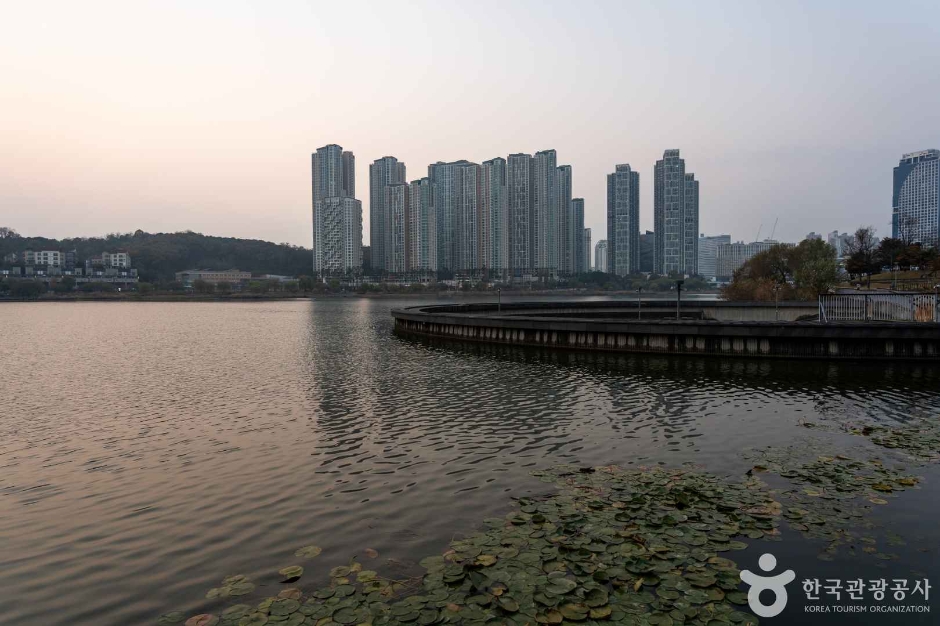E-Mart - Seosuwon Branch [Tax Refund Shop] (이마트 서수원)
5.6Km 2024-04-22
291, Suin-ro, Gwonseon-gu, Suwon-si, Gyeonggi-do
-
Suwon Arboretum Irwol (일월수목원)
5.6Km 2025-05-22
61 Irwol-ro, Jangan-gu, Suwon-si, Gyeonggi-do
Suwon Arboretum Irwol is an urban arboretum in Suwon that is an ecological landmark. It features a variety of gardens, including a forest garden, conifer garden, ecological observation garden, meadow garden, dry garden, exhibition greenhouse, shrub garden, and grass garden. The arboretum also includes facilities such as a library, a playground, waterside deck, and the Irwol Reservoir. Visitors can participate in a range of programs, such as guided tours, plant workshops, and ecological activities.
Hwaseong SODA Art Museum (소다미술관)
5.6Km 2025-12-16
30, Hyohaeng-ro 707beon-gil, Hwaseong-si, Gyeonggi-do
◎ Travel Information to Discover Hallyu’s Charm - K-Drama "Our Beloved Summer (2021)"
In Episode 12 of "Our Beloved Summer," Choi Ung (Choi Woo-shik) takes Yeon-su (Kim Da-mi) to a gallery where he is preparing for his solo exhibition. SODA Art Museum served as the gallery in that scene. With its distinctive design and artistic flair, SODA Art Museum offers visitors memorable cultural experiences that leave a lasting impression.
Olive Young - Suwon Jangan-gu Office Sageori Branch [Tax Refund Shop] (올리브영 수원장안구청사거리)
5.7Km 2024-04-19
920, Gyeongsu-daero, Jangan-gu, Suwon-si, Gyeonggi-do
-
Gwanggyo Lake Park (광교호수공원)
5.7Km 2025-05-22
165 Gwanggyohosu-ro, Yeongtong-gu, Suwon-si, Gyeonggi-do
Gwanggyo Lake Park is the largest lake park in the city center of Korea. The park is designed to blend the scenic nature of Gwanggyosan Mountain and the nearby reservoirs with urban culture. It consists of urban levees and 6 different themed "dumbeong," the Korean term for a pool of water.
Suwon Gwanggyo Museum (수원광교박물관)
5.8Km 2021-10-23
182, Gwanggyo-ro, Yeongtong-gu, Suwon-si, Gyeonggi-do
+82-31-228-4175
Suwon Gwanggyo Museum features a variety of relics that were discovered during the construction of Gwanggyo New Town. The exhibitions focus on the history and culture of the Gwanggyo area based on artifacts along with materials related to Korea’s modern history, Dokdo Island, and Admiral Yi Sun-sin. Suwon Gwanggyo Museum is located in Gwanggyo History Park near the burial site of Sim On and Prince Hyeryeong, providing a great opportunity for visitors to learn about Korea’s history as well as enjoy a relaxing stroll around the park.
Olive Young - Suwon Kyonggi University Branch [Tax Refund Shop] (올리브영 수원경기대점)
5.8Km 2024-06-27
34, Daehak-ro, Yeongtong-gu, Suwon-si, Gyeonggi-do
-
Artbox [Tax Refund Shop] (아트박스)
5.8Km 2024-04-19
1F Home Plus, 930, Gyeongsu-daero, Jangan-gu, Suwon-si, Gyeonggi-do
-
Olive Young - Homeplus Buksuwon Branch [Tax Refund Shop] (올리브영 홈플러스북수원)
5.8Km 2024-04-23
930, Gyeongsu-daero, Jangan-gu, Suwon-si, Gyeonggi-do
-
Manseokgeo Park (만석거공원)
5.8Km 2024-12-23
1087 Jeongjo-ro, Jangan-gu, Suwon-si, Gyeonggi-do
Manseokgeo Park centers around Manseokgeo Reservoir, built in 1795 to combat drought by transforming barren land into a water source. The park features a pavilion, tennis courts, a playground, small convenience store, an outdoor concert hall, and an art museum. In spring, cherry blossoms bloom, while summer brings beautiful lotus flowers to the lake. A well-maintained walking trail encircles the reservoir, and at night, the rainbow-colored musical fountain provides a spectacular view.
![E-Mart - Seosuwon Branch [Tax Refund Shop] (이마트 서수원)](http://tong.visitkorea.or.kr/cms/resource/22/2889322_image2_1.jpg)

![Olive Young - Suwon Jangan-gu Office Sageori Branch [Tax Refund Shop] (올리브영 수원장안구청사거리)](http://tong.visitkorea.or.kr/cms/resource/31/2888331_image2_1.jpg)

 English
English
 한국어
한국어 日本語
日本語 中文(简体)
中文(简体) Deutsch
Deutsch Français
Français Español
Español Русский
Русский